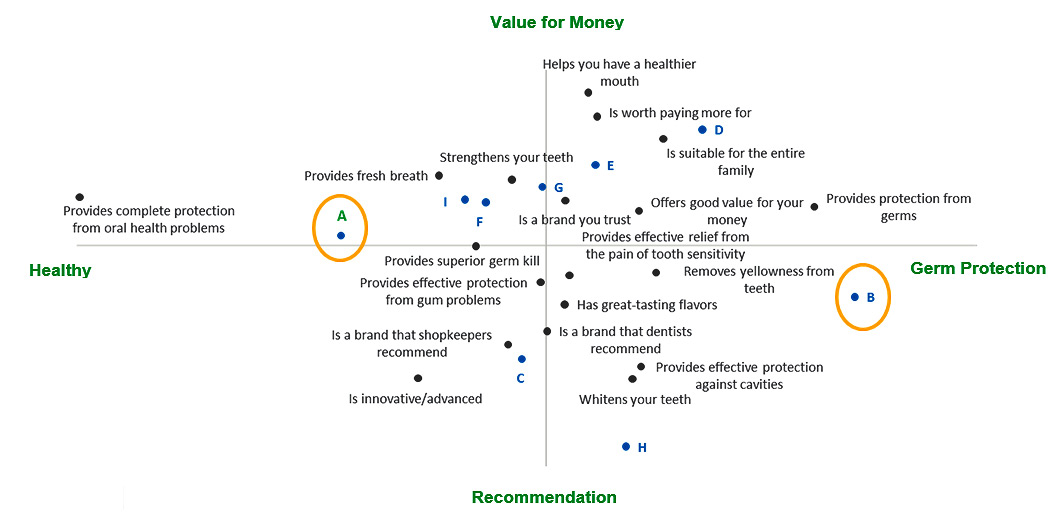Is perception the reality in the case of brand marketing? While consumers carry certain notions about a product that create emotional connects, today’s multiple channels of communication and social media platforms can change and enhance brand perceptions. The key is to ask the right questions. Why do people buy your brand’s product? Why do they use it? What emotions does your brand evoke? A deep dive analysis into your products’ attributes can tell you how satisfactory and useful your product is in the market, your brand’s perception in the market and performance against competition.
Your brand’s position is a culmination of perceptions that consumers have for your product compared to competing products. This is what a brand positioning map represents. It graphically studies and analyzes the perception of your product with respect to specific product characteristics, and ‘maps’ your product with all these opinions.
In short, the brand positioning map represents your brand’s strengths and weaknesses with respect to certain attributes important to your customer. It helps you identify market opportunities, areas of competitive advantage and how opportunities shift in dynamic market situations.
Positioning Your Brand in the Fast Lane
An effective marketer plans the right positioning that gives their products the greatest advantage in selected target markets. They analyze the brand positioning maps to derive insights and create planned positions for product marketing, launches and new product development. The insights help an organization’s branding and marketing teams to gain deeper knowledge and visualize how their products will behave and perform amidst their consumers’ expectations.
Let us take an example of toothpaste. The graph below gives the relative positions of different brands with respect to customer perceptions of ‘germ protection,’ ‘health,’ ‘value for money’ and ‘recommendation’. (The graph represents ‘health’ and ‘germ protection’ features along the x-axis and ‘value for money’ and the extent to which the brand is ‘recommended by doctors’ along the y-axis).

The graph indicates that Brand A is performing well on the ‘health’ index, while Brand B is performing well in the ‘germ protection’ area. Brands I and F seem to be the main competitor brands for Brand A that rank high on consumer perceptions of ‘providing complete protection from oral health problems,’ ‘providing fresh breath’ and ‘strengthening teeth’. A similar exercise can be done with other features to identify different perceptions and map the brand’s performance — both individually and against the competition. Such insights help in designing winning marketing strategies.
From Perception to 360-degree Clarity
Brand positioning maps can help organizations classify existing brands (within a particular category) in the market into different positioning quadrants. It helps identify the closest competitor brands and their relative strengths and weaknesses. It also provides useful competitor information for analysis, and identifies market segments with specific product requirements for potential product launches.
With a comprehensive view of consumer perceptions, the brand perception map helps marketers position products based on their true and distinct features to grab a larger consumer mindshare. Thus it helps a marketing manager to make strategic assessments with the right implications for sales, pricing, risk and profitability. Organizations can thus avoid situations of under, over and double positioning of any brand in the market.